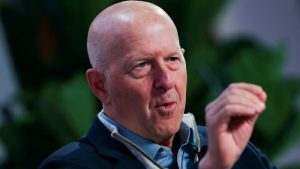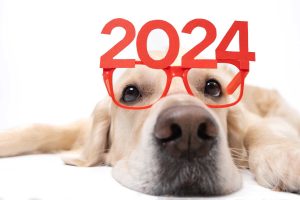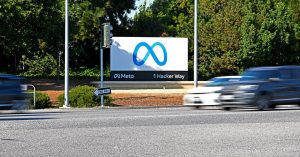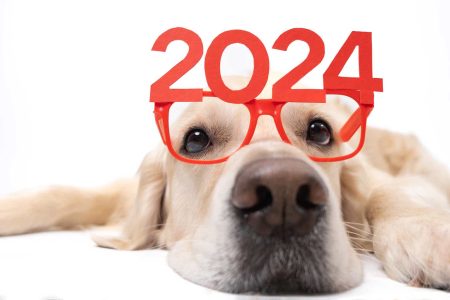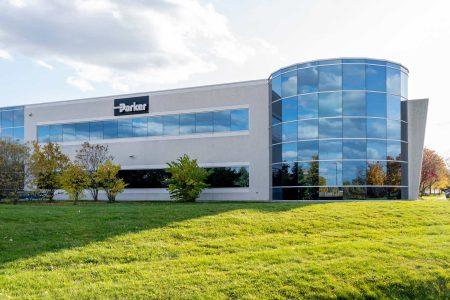Urban Outfitters, Inc. (NASDAQ:URBN) Q2 2025 Earnings Conference Call August 21, 2024 5:15 PM ET
Company Participants
Oona McCullough – Executive Director, Investor Relations
Frank Conforti – Co-President & Chief Operating Officer
Tricia Smith – Global Chief Executive Officer, Anthropologie Group
Shea Jensen – President, Urban Outfitters, North America
Melanie Marein-Efron – Chief Financial Officer
Richard Hayne – Chief Executive Officer
Conference Call Participants
Lorraine Hutchinson – Bank of America
Adrienne Yih – Barclays
Matthew Boss – JPMorgan
Paul Lejuez – Citi
Alex Straton – Morgan Stanley
Mark Altschwager – Baird
Dana Telsey – Telsey Advisory Group
Marni Shapiro – The Retail Tracker
Janet Kloppenburg – JJK Research
Ike Boruchow – Wells Fargo
Operator
Good day, ladies and gentlemen, and welcome to the Urban Outfitters, Inc. Second Quarter Fiscal ’25 Earnings Call. At this time, all participants are in a listen-only mode. Later, we will conduct a question-and-answer session and instructions will follow at that time. As a reminder, this conference call is being recorded.
I would now like to introduce Oona McCullough, Executive Director of Investor Relations. Ms. McCullough, you may begin.
Oona McCullough
Good afternoon, and welcome to the URBN second quarter fiscal 2025 conference call.
Earlier this afternoon, the company issued a press release outlining the financial and operating results for the three and six-month period ending July 31, 2024.
The following discussions may include forward-looking statements. Please note that actual results may differ materially from those statements. Additional information concerning factors that could cause actual results to differ materially from projected results is contained in the company’s filings with the Securities and Exchange Commission.
On today’s call you will hear from Richard Hayne, CEO, URBN; Frank Conforti, Co-President and COO, URBN; Tricia Smith, Global CEO, Anthropologie Group; Shea Jensen, President, Urban Outfitters, North America; and Melanie Marein-Efron, CFO, URBN. Following that, we will be pleased to address your questions. For more detailed commentary on our quarterly performance and the text of today’s conference call, please refer to our investor relations website at www.urbn.com.
I will now turn the call over to Frank.
Frank Conforti
Thank you, Oona, and good afternoon, everyone.
Today I will discuss our total company second quarter results versus the prior year followed by some more detailed notes by brand. I will also provide some commentary on our current trends and the macro environment.
Overall, the teams delivered an exceptional quarter which was nicely ahead of our plans as discussed on the first quarter call. Total URBN sales grew by 6% to a Q2 record of $1.4 billion and four of our five brands continued to perform remarkably well, posting record second quarter sales and profits.
Our sales growth was driven in part by a Retail segment comp of 2%. Anthropologie and Free People produced a high single-digit positive Retail segment comp, which more than offset the high single-digit Retail segment comp decline at Urban Outfitters. Nuuly also delivered robust double-digit revenue growth due to a 55% increase in average active subscribers versus the prior year. Additionally, the Wholesale segment increased revenue by 15% driven by a healthy increase in the regular price sales at Free People.
Now moving on to gross profit. URBN gross profit dollars increased 8% to $493 million while gross profit rate improved by 68 basis points to 36.5%. The improvement in the gross profit rate was primarily due to increased initial merchandise margins, driven by strong execution of cross-functional brand initiatives in the Retail, Wholesale and Nuuly segments. These improvements were partially offset by a higher markdown rate at Urban Outfitters as the brand used incremental discounts to move through excess inventory.
Now moving on to SG&A expenses. For the quarter, SG&A increased 8% versus the prior comparable quarter and deleveraged by 32 basis points. The deleverage was primarily due to the Urban Outfitters brand not being able to reduce SG&A at the same rate of their sales decline. While we did reduce our SG&A spending at the Urban Outfitters brand in Q2, we did not believe it was prudent to reduce expenses at the same rate as sales.
The increase in total company SG&A expense dollars was largely due to increased marketing spend supporting the solid sales growth at Anthropologie, Free People, FP Movement and Nuuly brands. Anthropologie and Free People brands’ marketing efforts helped to drive double-digit traffic gains to the store and digital channels, while Nuuly’s marketing campaigns helped to produce over 50% active subscriber growth.
Total URBN operating income increased 10% versus last year to $145 million with operating profit rate improving 36 basis points to 10.7%.
Net income increased 13% to $117 million or $1.24 per diluted share.
I will now provide more details by brand, starting with Free People. The Free People team produced an outstanding quarter with global Free People group sales increasing 10%. The double-digit increase in sales was driven by an impressive 7% Retail segment comp and an 18% increase in Wholesale segment revenues.
The 7% Retail segment comp gain was on top of the incredible 27% Retail segment comp from last year. The sales comp was driven by a similar comp in both the digital and store channels. During the quarter, the Free People brand achieved positive sales growth across apparel, accessories and Movement. The FP Movement brand delivered 18% total growth, driven by a 6% Retail segment comp, new store growth and over 60% Wholesale segment growth.
Congratulations to the Free People team on delivering another strong quarter even while up against last year’s exceptional second quarter performance. Customer response to the brand’s fall trends has been positive and the brand continues to gain market share. We believe the brand could deliver a low to mid-single-digit positive Retail segment ‘comp’ in the third quarter.
The Free People Wholesale segment sales increased 18% during the quarter, driven by full price sales gains in department and specialty stores, partially offset by an intentional decline in sales to the closeout channel. The FP Movement brand led the way with strong sales growth in the quarter. Segment profitability improved significantly from the prior year when the brand had elevated closeout channel sales to reduce aging product. We believe the Wholesale segment could continue to deliver double-digit sales growth and improved profitability versus last year in the third quarter.
Now moving on to the Urban Outfitters brand. Urban Outfitters recorded a 9% Retail segment comp decline in the quarter. This was largely in line with our expectations when we spoke with you in May, with both North American and Europe showing slight improvement from their Q1 performance, driven in part by higher promotions. UO’s negative comp was the result of disappointing performance in both North America and Europe.
Global Retail segment comp declined in both the digital and store channels. As noted on the last call, both the home and women’s accessories categories are showing positive trends. Both categories recorded double-digit positive regular price comps, driving nicely positive maintained margin dollar and rate improvements. All other categories sales comps declined in the quarter. As you know, new leadership joined the brand in North America earlier this year and Shea Jensen, the President of UO North America will speak later to the go forward brand strategy in North America.
Finally, I will touch on the Nuuly business, which delivered another exceptional quarter. Nuuly added over 25,000 average active subscribers versus the first quarter, ending the quarter with over 250,000 average active subscribers for the full quarter. The solid growth in average subscribers led in part to a 63% increase in brand revenue. As we have noted, historically Nuuly experiences the most significant growth in subscribers during the seasonally-strong first and third quarters. A strong start in August bodes well for the Nuuly brand to continue to deliver healthy revenue growth in the third quarter.
The strong revenue growth in the second quarter led to expense rate leverage in almost every expense line item and resulted in a record operating profit of $5.3 million and a 5.9% operating margin for the brand. We believe this level of profitability could continue in the back half of the year which would make Nuuly profitable on a full-year basis this year. Congratulaions to the Nuuly team on an exceptional quarter.
Now on to more recent trends and the macro environment. Towards the end of July and into August, we have observed a slight deceleration in Retail segment sales compared to the second quarter run rate. While consumer traffic has remained consistent, overall purchasing activity has shown some softening. New product launches continue to resonate well, though customers appear to be exercising more discretion in their buying decisions.
Given the recency of these trends, we are approaching our third quarter plans with measured caution. There are likely various macroeconomic factors influencing consumer behavior at this time, making it difficult to pinpoint specific causes. However, it is evident that consumer sentiment has softened recently, and the duration of this trend remains uncertain. During this time of uncertainty, we believe it is prudent to keep inventory levels lean and manage expenses appropriately, and that is exactly what we plan to do.
Despite a deceleration in trend, total company sales remain positive, and we believe Retail segment comps could grow in the low single-digit range for the third quarter. Positive Retail segment comps combined with robust revenue growth from Nuuly and double-digit growth in the Wholesale segment could result in a mid-single digit increase in total Q3 URBN sales.
I will now turn the call over to Tricia Smith, Global CEO of the Anthropologie Group, to provide details on their brand’s second quarter performance as well as a strategic update.
Tricia Smith
Thank you, Frank, and good afternoon, everyone.
I’m delighted to have the opportunity to speak to you again about the Anthropologie Group’s strategic growth initiatives and our continued top-line and bottom-line growth in Q2.
This quarter marks our 14th consecutive quarter of growth. We delivered a 7% Retail segment comp with similar results in the store and digital channels. Our Women’s apparel and accessory business continues to lead our growth with a double-digit comp increase, driven by our own-brand penetration increasing several hundred basis points. In our Home business, we are seeing signs of improvement with our trend shifting to low single-digit negative comps.
We are particularly proud that our top-line growth is complemented by even greater growth in profit. The brand delivered record second quarter operating income, up 32%, supported by IMU growth, continued markdown efficiency, and operational improvements. This marks our seventh consecutive quarter of double-digit operating income growth.
As the quarter progressed, we saw a slight deceleration in July that continued into August, and we are anticipating low- to mid-single-digit comp increases in the third quarter. We anticipate that we will be more promotional in Q3 than we were last year to ensure that our inventory is more aligned to the current sales trends as we enter Q4.
Now shifting to our longer-term strategy. Over the last few years, our team has elevated product and creative, grown our customer base, and enhanced our selling environments. We are transforming our business to continue to support the expansive growth we have experienced. Since I shared our strategic priorities with you last summer, we have exceeded the goals we set for ourselves and evolved our priorities.
Our north star remains the same, and we continue to identify new opportunities for growth, taking us from $1.6 billion in FY ’20 pre-COVID to last year’s $2.2 billion and looking ahead toward our $3 billion ambition. We’ve adopted an accelerated growth mindset founded on a rapid test-and-learn methodology across the business. We are testing, reacting, and amplifying successes.
In our Women’s business three years ago when seeking to modernize our product, we started with what we are most famous for, we accelerated dresses and built our denim and shoe assortment. Additionally, we strengthened our Apparel Own Brands, increasing their contribution to nearly 70% of the business. Pilcro, our lifestyle denim brand, has grown at a rate outpacing our top-line since last year. And Maeve, a customer favorite, is our most profitable own brand and has seen strong double-digit growth year-over-year.
Looking forward, we see opportunity for further growth by expanding the end-use-offering of our products to serve our customers’ full lifestyle through three new concepts: we are building our active and loungewear business under our own brand Daily Practice, offering a year-round assortment of sleepwear and intimates in all stores, and a vacation lifestyle capsule in select locations seasonally and on-line year-round. These Own Brand collections are supplemented with market brands who have authority within the space. Six months ago, we tested doubling the store square footage of these concepts. And the test resulted in improved overall store performance with test stores outpacing control stores in the growth of the total women’s category and well as the Daily Practice collection. And given the success of that test, we have rolled out the expansion to 50 locations.
In our Home business, we’re well-positioned in categories that resonate with customers around entertaining and refreshing their home decor. For example, our Q2 home accessories business, which includes categories such as home fragrance and tabletop, has grown high single-digits year-over-year. We spent the last 18 months laying the foundation for more profitable growth in the home category. In the Home business, as you know, product profitability is impacted significantly by factors other than IMU, and we have engineered operational efficiencies upon which we can more profitably grow our business. We are applying our rapid testing approach in Anthropologie Home, taking strategic risks and fueling newness.
Our customers are responding to our products and our inspirational creative assets and at the same time, appealing to and helping us speak to more customers. Since FY ’20, through the end of last year, we have grown our customer base by an additional 1 million customers, up 30%. Of this, our new customer was the fastest-growing segment at plus 52%, while we have also seen double-digit growth in retained customers. In addition, our sales per customer has grown over 20%. In addition to growing our total customer base and their value, we have simultaneously welcomed a younger demographic to our brand, especially in our Women’s division where we’ve seen a two-year reduction in the average age of our new customers in the last year.
Furthermore, we are speaking to our customers as omnichannel customers, not just retail or digital. Our omnichannel customers spend four times what single-channel customers spend, contributing to the consistent growth we see across both channels. We are investing in all channels and points of customer contact to enhance the selling experience in digital, in stores, and in our call centers.
We are adding stores at a more rapid rate than we have in a decade. Since FY ’20 our four-wall profitability has grown over 900 basis points while our same store sales have increased almost 20%. Our plan to grow the Anthropologie fleet to 270 stores globally is well underway. Having acquired 1 million new customers, we’re leveraging omnichannel data to position our stores where we know we have customers, particularly as customers are migrating to different geographies and markets, and we are honored with the welcome reception we’ve received in those communities. As we open stores in new markets, along with strong new store sales, we also see significant increases in digital demand. So, our omni approach is about creating a consistent and outstanding experience across channels.
We are proud of our transformation, and I am proud of the exceptional team delivering our results. I am confident in our continued growth on our path to become a $3 billion brand, and I look forward to providing you with more updates in the future.
I will now turn the call back to Frank.
Frank Conforti
Thank you, Tricia. Congratulations on the incredible performance and exciting strategic update.
Next up is Shea Jensen, Urban Outfitters, North American President. She will be speaking to the UO North America’s updated brand review and strategic plan.
Shea Jensen
Thank you, Frank, and good afternoon, everyone. I’m pleased to share an update on the Urban Outfitters brand North America.
Over the past few years, Urban Outfitters North America has faced significant challenges in both top- and bottom-line performance. And, over the past six months, with new leadership in place, the team has conducted an extensive review of the brand. We’ve assessed our market position, customer health, product assortments, marketing, including our creative perspective, our selling channel touchpoints and our talent.
What we learned is, while there is a great deal of opportunity for improvement, the brand is not fundamentally broken. We believe the erosion in sales and profits is due to a combination of a lack of focus and clarity on our customer in a dynamic and changing market and poor execution in the absence of a wholly dedicated leadership team. We are confident that with the right team in place and the right approach, Urban Outfitters can rebuild our customer base, restore profitability, and reinstate our position as one of the most beloved brands for young customers.
Our segment has seen rapid and seismic shifts as the generational passage from Millennial to Gen Z has occurred amidst a global pandemic. As these shifts occurred and a new generation began coming of age, we lost focus on our customer, and we lost track of how to win with them in today’s dynamic retail environment. As a result, our customer funnel eroded, as we did not acquire enough new customers, and our retention rates declined as well. Additionally, the lack of clarity and focus on customers impacted our product strategies, our marketing strategies, and our channel experience across our touchpoints.
In the short term, our focus has been on stabilizing our business. We have strengthened our leadership team, adding subject matter expertise across all critical functions, corrected our inventory levels so that we are entering the second half of this year with clean inventory and new fresh product, and perhaps most importantly, worked to gain a solid understanding of young consumers today through extensive customer research, both qualitative and quantitative. These insights will guide our path forward and help shape our strategy. Looking ahead, we have established five pillars to recover the brand and return to growth. Our ambition is to become the definitive brand for young adults.
The five pillars of brand recovery we have identified are: first, we have defined and will consistently focus on our target customer; second, with a clear and united understanding of who our customers are, we will rebuild our customer base by investing in marketing strategies that meet young customers where they are and build affinity with our brand; third, we will evolve our product offer to be more relevant to a broader range of our target customers; fourth, we will maintain focus on disciplined inventory investments, ensuring our investments drive improved full price sell-through and meet the demand of our customers; and finally, we will adapt our touchpoints to be more relevant for Gen Z consumers.
Our first step was to gain a firm understanding of Gen Z consumers. Today, the Gen Z consumer is significantly different than the Millennial generation before them: from size, ethnicity, tastes and occasions, to how they view and interact with the world. We have traditionally targeted an aspirational 22-year-old customer living in major metropolitan cities. Our new customer segmentation broadens our target and aligns customers across three segments: younger, suburban pre-college customers; a college age student; and an older post-college customer. We welcome and want to serve today’s population of young customers, across more prices and sizes, more categories and occasions, and across more aesthetics and sensibilities in both urban and suburban areas. This includes pivoting from our traditionally alternative sensibility to offering a more upbeat and welcoming perspective across our assortment and our touchpoints.
With this in mind, our goal is to welcome more people into our brand. We will rebuild our customer base by refreshing our brand identity: clarifying our mission, vision and values, evolving our creative expressions across our touchpoints, and repositioning Urban Outfitters to be a more welcoming and relevant brand for young customers today. Additionally, we are already actively strengthening our presence across social media platforms and reallocating our marketing investments to prioritize the acquisition of new customers. We believe that our approach will yield healthier levels of organic traffic and higher customer acquisition rates to continuously fuel our customer funnel.
Next, we will evolve our product offer to serve a broader range of customers. We believe our product assortment has unintentionally become too narrow in price, occasion, and sensibility and needs broader appeal. With insights driving our path forward, we will increase the penetration of opening price points as well as ensure we offer the best price/value combination on every item we sell. We will broaden our category range and ensure we are meeting the lifestyle and occasion needs of our target customers.
We do not believe this means an increase in total SKUs, but rather a more accurate representation of the right products across our total assortment. This does include better accuracy and allocation of sizes and improving the productivity of the total offering through assortment planning and allocation that is rooted in our customer strategy. We plan to introduce new categories such as athleisure, distort into the categories we’ve heard matter to our customers, such as denim and lounge, and amplify categories where we differentiate, such as gifting and beauty. We also are excited to rebuild our branded assortment through partnerships with aspirational, influential and credible national brands that matter to young customers today.
We anticipate our customer-focused product strategies will deliver a higher penetration of full price sales and full price sales growth, and a reduced dependency on promotionality. We know sentiment and style can move fast with young customers, and in order to leverage the incredible scale of the URBN sourcing and speed-to-market capabilities, we need to maintain inventory discipline and better align our sales to inventory levels. By utilizing more data-driven planning and allocation capabilities, we will reduce our markdowns, work to restore profitability, and position our teams to fuel growth by making decisions closer to our customers. As we enter the second half of this year with clean inventory, we expect our turns to improve on a regular cadence.
Finally, we heard from our customers that a combination of social, digital and in real life, or physical shopping, are equally important components of the shopping experience. Gen Z’s coming-of-age experience began during a global pandemic, and the idea of connecting a shopping experience through the discovery of social media, the convenience of digital shopping, and the connection that can be made in physical retail, is table stakes.
We are advantaged with our retail footprint and omnichannel capabilities. We will work to optimize our footprint to ensure our locations are positioned near our target demographic and ensure we better align the size of our stores with our new vision for physical and retail and the store experience. We believe we have an opportunity to close some store locations where population shifts have occurred, to relocate some stores to be more adjacent to our target customers, but also to better align the size of stores with our future needs. At the same time, we will work to actively optimize our stores through improved assortment strategies and localization.
Finally, digital channels are where young customers live their life. Our team is doubling down our engagement on social platforms and working to ensure our digital experience evolves to be an extension of that digital experience through more user-generated content, improved creative, and social features. Omnichannel customers are our most valuable customers, spending more than three times other customers. With an adapted channel experience, we expect our customer engagement and retention will grow, and ultimately our percentage of omnichannel customers will increase.
Despite our current challenges, we are optimistic about the steps we’re taking to revitalize Urban Outfitters North America. In the short term, we are looking to see sequential top-line improvement with a building penetration of full price sales, which should drive stronger bottom-line improvement. As we pivot our marketing strategies, we expect a build of our customer funnel, while at the same time, we are working to evolve our product assortment and see full price sales grow. We recognize this may take time to fully materialize, but we are committed to rebuilding our customer base and restoring profitability. The road ahead involves focused execution on our five recovery pillars. With a solid leadership team in place, we are optimistic about our strategy, the path ahead, and our ambition to become the definitive brand for young adults.
I will now turn the call over to Melanie.
Melanie Marein-Efron
Thank you, Shea.
Now, I will discuss our thoughts on the third quarter financial performance and fiscal year FY ’25 performance.
As Frank mentioned, we have seen a slight deceleration in trends recently, but our total company sales remain positive. Right now, we believe that third quarter total company sales growth could be mid-single-digits. Sales growth in Q3 could result from low-single-digit growth in Retail segment comp and low-teen growth in the Wholesale segment. In addition, we believe that Nuuly segment sales growth could be mid-double-digits.
Now, on to gross profit margin. We believe URBN’s gross margin rate for the third quarter could decline by approximately 100 basis points compared to the prior-year third quarter. The reduction in gross profit margin could be primarily due to higher markdowns as our third quarter receipt plans were ordered prior to the recent deceleration. As a result, we will need to add incremental promotional activity and markdowns in the quarter to clear through inventory as we enter the fourth quarter. We continue to believe that URBN can deliver our full year plan of approximately 50 basis points to 100 basis points of gross margin improvement compared to the prior year.
Now moving on to SG&A expenses. Based on our current sales performance and plan, we believe SG&A growth for the third quarter will increase in the mid-single-digits. Our planned growth in SG&A could be primarily driven by higher marketing expenses to support growth in customers and sales at Anthropologie, Free People, FP Movement and Nuuly. As always, if sales performance fluctuates, we maintain a certain level of variable SG&A spending that we can adjust up and down depending on how our business is performing.
We are currently planning our effective tax rate to be approximately 24.25% for the third quarter and 24% for the full year.
Now, moving onto inventory. We believe that inventory levels in the third quarter could grow at a rate similar to sales growth.
Capital expenditures for the fiscal year are planned at approximately $210 million. The FY ’25 capital project spend is broken down as follows: approximately 50% is related to retail store expansion and support; approximately 25% is related to logistics capacity investments, including the Nuuly rental fulfillment center in Raymore, Missouri, which we opened in the first quarter; and the remaining 25% would be our normal capital investments supporting IT, home office and logistics operations.
Lastly, we will be opening approximately 57 new stores and closing approximately 25 stores. Our net new store growth is being driven by growth in FP Movement, Free People and Anthropologie stores. During FY ’25, we plan on opening 25 FP Movement stores, 12 Free People stores and 13 Anthropologie stores.
As a reminder, the forgoing does not constitute a forecast, but is simply a reflection of our current views. The company disclaims any obligation to update forward-looking statements.
Now, I am pleased to turn the call to Dick for some closing remarks.
Richard Hayne
Thank you, Mel, and thank you to our brand leaders: Tricia, Sheila, Shea, and Dave, and in Europe, Emma and Matt. They and their teams produced outstanding second quarter results. As Frank shared earlier, four of our five brands delivered record second quarter sales and profits, and the Urban brand, as Shea just discussed, has fashioned its strategy to win on a go-forward basis. Most importantly, the Urban brand now has a strong team in place to deliver on that strategy.
Turning to the current business climate, on our last conference call, I stated that the customer mood in Q1 was enthusiastic rather than the mood a year earlier, which was exuberant. I believe this is still an accurate description for Q2. Traffic in our stores remain strong and online sessions remain double-digit positive at three of our four retail brands. Fall products are selling briskly with customers choosing the newest fashion. Yet all our retail brands registered a slight sales slowdown in mid-July that continues in August. So, what’s different?
You may recall, I also said on the May call that consumer purchases were becoming slightly more considered than the previous year. With the slowdown starting in mid-July, purchases became even more considered. Conversion dropped slightly and price became a bigger factor with AOV dipping slightly, as well. Total transactions continue to grow, but the customer, on average, spent a little less on each purchase. We believe this suggests a return to pre-COVID behavior when our comp sales expectations were typically lower and customers were more selective. We expect this will become the new reality and, as Frank discussed, will necessitate even stronger inventory and expense control. Our brand and shared service teams understand the new environment and are prepared to meet that challenge.
Finally, a word about our youngest brand, Nuuly. The brand celebrated its fifth birthday in the second quarter and commemorated it by delivering another quarter of strong year-over-year double-digit gains in average active subscribers and revenue. They also posted record profits and became the number one fashion rental business in the US. Happy birthday, Nuuly, congratulations on your success.
That concludes our prepared remarks. I wish to thank our Co-Presidents, the brand, design and shared service leaders and their teams, and our 28,000 associates worldwide for their excellent work. Our outstanding Q2 results flow directly from your creativity, drive and resilience, so thank you. Thanks also to our many partners around the world. We appreciate the significant contributions you make to our success. And finally, thanks to our shareholders for your continued support.
I now turn the call over for your questions.
Question-and-Answer Session
Operator
Thank you. [Operator Instructions] And our first question will come from the line of Lorraine Hutchinson with Bank of America. Your line is open.
Lorraine Hutchinson
Thank you. Good afternoon. Can you comment on how comfortable you are with the level and content of UO inventory entering the second half?
And then separately, can you also walk us through the drivers of the fourth quarter gross margin recovery assumed in guidance?
Shea Jensen
Hi, Lorraine, it’s Shea, I can take that. We feel really great. As you heard in the prepared remarks, we’re confident that our inventory is clean. Inventory levels are much more aligned with sales and really that’s the primary driver of the margin recovery.
Frank Conforti
And Lorraine, as it relates to our fourth quarter for URBN, it would really be driven by two things, the gross profit margin improvement opportunity. One, IMU, which we’ve got a very strong and comfortable, competent line of sight to. And second is the significant opportunity and markdown improvement at the Urban Outfitters brand. I think Sheila, Shea and team have done a great job at aligning their inventory now much closer with sales, and they had significantly higher markdown rates than what we would normally run in the fourth quarter last year. So that there is meaningful opportunity for us — for that brand and to help URBN drive improved markdown rates in the fourth quarter, driving improved gross profit margin in the fourth quarter.
Operator
Thank you. One moment for our next question. And that will come from the line of Adrienne Yih with Barclays. Your line is open.
Adrienne Yih
Great. Thank you very much. My question is around kind of the — your higher-end consumer and sort of kind of their resistance or price resistance. Can you — either Dick or Frank or Melanie, can you talk about kind of your initial retails across the three brands, where they are relative to 2019? And I guess, like does this — does the increasing promotionality at Anthro in particular, does that mean that — are you sensing that there’s any need to readjust kind of initial retail prices? Thank you.
Richard Hayne
Okay, Adrienne, I’ll start with that, but then ask Tricia to talk about Anthropologie a little bit more specifically, although I’ll mention Anthropologie in my answer. When I talk about the consumer — our customer, decreasing the AOV, meaning the amount of money they spend per transaction, an awful lot of that is occurring because at both the Anthropologie and Free People brands, we are now offering them an alternative product to purchase.
In the Anthropologie brand, Tricia talked about Daily Practice and Off Hours, and that is somewhat less expensive than their other apparel options. And that customer, the Anthropologie customer, is choosing those lower-priced items, which is driving the overall AUR and AOV down slightly.
Same thing is happening in Free People, because FP Movement is doing so well, it’s a higher penetration of the total. And FP Movement is slightly less expensive than the rest of their apparel. So, I think that it’s not really a problem, it’s just — it’s showing up in the overall comps.
Tricia, do you want to expand on that?
Tricia Smith
Sure. I think when you look at our average unit retail received, Adrienne, from now through — back through FY ’19 in total, that AUR is not that much higher, to Dick’s point around the additional categories that we’ve introduced into the mix. So, our prices in total, in terms of the receipts that we’ve brought in, like low-single — like mid-single-digits, I would say, our average unit sales are up tremendously and that has really come from the return to a full price business. So, the mix of our price points in total is not that different, but we will continue to drive a full price business, which we have been doing for the last several years.
Operator
Thank you. One moment for our next question. And that will come from the line of Matthew Boss with JPMorgan. Your line is open.
Matthew Boss
Great, thanks. So Dick, could you elaborate a bit just on demand trends that you’re seeing in August at Anthro and Free People? And also just speak to initial customer response to back-to-school at the Urban Outfitters brand?
Richard Hayne
Okay, I will let Shea talk about Urban Outfitters. Customer demand in overall, so at all of our retail brands, deaccelerated slightly in mid-July and we’re seeing that continue into August. The lower demand rate, feels like it’s a return to pre-COVID levels and away from what I would consider a supercharged demand over the last few years.
Now, our investment in brand marketing over the past few years in three of our retail brands was elevated and is now paying dividends. Those brands grew their customer base considerably. And so now store traffic and online traffic remains strong and that’s driving total transactions. So, with customers becoming more selective in their purchases or buying slightly less expensive items, the extra transactions are more than offsetting the slight dip in AOV and driving those positive comps.
So, you want to talk about back-to-school?
Shea Jensen
Yeah, it’s Shea. I would say that what we’re seeing is not dissimilar to what Dick covered for the overall URBN status. However, I think in some of the areas that we have been able to impact with some of our initial work, we are seeing some positive momentum, so areas like women’s, accessories and home and even across our denim categories, which is obviously a very strong category for back-to-school, and that brings us some optimism against our path forward, but I think generally it’s in line with what Dick said.
Operator
Thank you. One moment for our next question. And that will come from the line of Paul Lejuez with Citi. Your line is open.
Paul Lejuez
Hey, thanks guys. I know you said that you felt decent about inventory of the Urban Outfitters brand. But I’m curious, Shea, do you think the product and the store aesthetic is where you want it to be to justify picking up marketing investment at this point, or is that going to take some time? Just curious when we might see those picked up marketing investments. And then also curious to get your view on what is the right size of the Urban Outfitters store and the right mix of mall versus off-mall. Thanks.
Shea Jensen
Yeah, thanks for the question. I hate to hesitate on timing. Having been here for six months, the first step was really to get the right team in place and to build the strategy, which I think we feel really confident about. These things don’t happen in a certain sequence or order. From the marketing perspective, we’re really trying to learn as much as we can, and try different things. The initial step that we have taken that we feel great about is really accelerating our presence and engagement on social media. And we are seeing some initial results there. There’s, obviously, a lot of work to do in terms of bringing more relevant touchpoints to life across our stores from the experience and, of course, in the product category. And we have lead times that we’re working with. So I hate to comment on specific timing of the sort, but what I can comment on is that we feel optimistic about our plan and we’re getting to work. That’s really our next step.
In terms of store size, yes, we do feel like our average store size is too big, as I said. We think we need to be roughly in the 6,000 to 8,000 square feet, and we’re higher than that. And so, we have a number of leases that are coming up in the next few years, and we’ll be able to take a look at each one to make sure, one, we have the right location, and two, we optimize for the right space and size.
Operator
And one moment for our next question. And that will come from the line of Alex Straton with Morgan Stanley. Your line is open.
Alex Straton
Perfect. I have a couple. One just related to the Urban Outfitters business, just with the deleverage you’re seeing there on the challenging sales trends, are there any plans to reduce the fixed cost base or would you maybe consider a smaller overall store footprint? Just wondering if that’s potentially in the strategy.
And then maybe for Frank, just on the higher markdowns you’re assuming for the third quarter, is that across the brands, or is it concentrated at specific banner? Thanks a lot.
Frank Conforti
I can take the higher markdowns first. So right now, I think we put into plan based on the slight slowdown that we’ve seen, higher markdowns across all brands, because we have seen the slight slowdown across all brands. What I would say right now is we’re hoping that that’s a conservative plan. Things are definitely very choppy right now, and we’re hoping the guidance or the plan for 100 basis point decline on a year-over-year basis is a conservative plan. But it is across all three brands in order to keep inventory where we need it to be coming into holiday.
Richard Hayne
Alex, this is Dick talking. As Shea said, over the next three years, over 50% of the Urban stores in North America will be up for renewal. Our decision to renew will renew, relocate, downsize or close will be made on a case-by-case basis based on the economics. Over the last seven years, most of the stores we’ve opened are currently four-wall profitable. Now those stores tend to be smaller than our average and tend to be in locations outside of the large, large major cities. So that sort of gives you a hint of how we’re thinking about it. But again, it will depend on the economics of each store on a case-by-case basis.
Operator
And one moment for our next question. And that will come from the line of Mark Altschwager with Baird. Your line is open.
Mark Altschwager
Good afternoon. Thanks for taking my question. Just another one on UO. Appreciate all the detail here on the plan. I mean, it does sound like a major repositioning and these things take time. So, just how should we think about kind of short-, medium-term sales and margin guideposts as you execute on these changes? And I mean, is it — is your expectation that the brand can return to sales growth in fiscal ’26? Or just any more detail on how you’re thinking about that path would be great. Thank you.
Richard Hayne
Before I ask Shea to answer that, I will say that we’re not going to put time limits or projections on any of this. Our idea is to get working, get things moving in the right direction and then let that take care of itself.
Shea, you want to say anything else about it?
Shea Jensen
No, nothing to add.
Richard Hayne
Okay.
Operator
One moment for our next question. And that will come from the line of Dana Telsey with Telsey Advisory Group. Your line is open.
Dana Telsey
Hi, good afternoon everyone. As you think about the inventory levels given the current sales softening, Melanie and Frank, how do you think about what should the right inventory level rate be as we look to the third and the fourth quarter?
And then, with both the Anthro business and the Urban business, with the Anthro business, the customer coming down in age and obviously adjusting the Urban business, how do you think of the marketing spend on each business and where it should be? And is your own brand versus third-party brand, is that shifting for each business, too, and what the margin profile would look like? Thank you.
Richard Hayne
That’s a lot. Melanie, you want to take it? Go ahead.
Melanie Marein-Efron
Okay. Starting with inventory — thank you for your question, Dana. So, we feel good about the inventories exiting Q2 by segment. Our inventories below sales growth, with Retail segment comp inventory down 1% on comp sales growth up 2%. And similarly, on Wholesale, our inventory levels were up just 3% on sales growth of 15%.
Now looking forward, we are planning Q4 more conservatively, but in Q3, our receipt plans were based on the trends of earlier in Q2. So, given the recent trend deceleration, we may have to add incremental promotions and markdowns. And our gross margin guidance, which I provided earlier, reflects that in the 100 points reduction in gross margin.
So, for fourth quarter, we have lowered our buy plan in order to account for the slight current slowdown and we’re planning inventory more conservatively for the fourth quarter, obviously, targeting inventory below sales growth in the fourth quarter.
Richard Hayne
Okay. Tricia, do you want to talk about Anthropologie’s marketing?
Tricia Smith
Yes. Dana, I think when we talk about acquiring new customers at Anthropologie and attracting a new younger customer, we tend to think of really attracting a millennial-aged customer. So, we think of the target customer under the age of 40, and then obviously look at the balance of our retained customers. And both of those are growing nicely. When we’re aging down, it really is coming from that under 40 segment, targeted a little bit differently than we’ve historically targeted our existing customer to Anthropologie, responding very well to some of the strategies that we’ve implemented on targeting them where they are. And so, while the total growth of customers over — under 40 is outpacing that of those over 40, we’re excited that we’re still retaining all of our customer segments and feel like we’re thoughtfully looking at attracting a new younger customer for Anthropologie.
Richard Hayne
Dana, just to let you and the rest of the folks on the line know, when you talk about the younger customers, it is true that we are attracting the younger customer for Anthropologie, but the overall average age of the customer at Anthropologie is only down a few years from what it was two years ago. So, it hasn’t changed anywhere near as precipitously as some people might think.
Operator
And one moment for our next question. That will come from the line of Marni Shapiro with The Retail Tracker. Your line is open.
Marni Shapiro
Hey, guys. Thanks so much for taking my question. I have one quick follow-up on the slowdown you’re seeing. I’m curious if you’re seeing any regional differences. And if you’re seeing — we’re seeing a trend out there. We’re actually physically seeing it, but we’re hearing about a trend about people are just buying closer to need. And so, the lulls between the seasons are the bigger lulls and then they wait to buy whether it’s for holiday or back to school. So, I’m curious if you’re seeing those trends. And I just have one follow-up on Free People after that, if you don’t mind.
Richard Hayne
Don’t mind. I guess, Marni, I would say that we haven’t seen a lot of differences by region or geography. So certainly, one of the first things that we checked, hoping that we could see something that might see this in some direction. I had not really considered what you just said, which is more time in between seasons. I do think oftentimes, as you know, because you were in the business a number of years, when you have a very, very hot summer early like we did on the East Coast at least, oftentimes, later in the summer, people get a little bored with summer, may I say, and are anxious for fall to come. So, I don’t know if that has any impact at all, but that’s just another idea. But we don’t really have any definitive reason to believe other than a potentially slightly strapped consumer — or I don’t want to say strapped, overextended consumer, why the consumer might be slowing down.
Marni Shapiro
Yeah. To me, it’s when the consumer is being careful, they wait to buy something to maybe a couple of extra weeks to see what else is out there before they commit. I think a tighter wallet makes them a little bit of commitment phobic. But can I just ask you a question…
Richard Hayne
Before you go to the Free People question, it would also be — I might wait a couple of weeks to see if there are any more promotions.
Marni Shapiro
Yeah, exactly. With the success of Free People and Free People Movement, are you seeing the success also in Europe? And is Free People Movement in Europe? And what are plans to either bring it there or open more Free People stores there?
Melanie Marein-Efron
Okay. I can answer that. Actually our Free People European business, which includes the UK, France and Netherlands currently, is actually outpacing in Q2 our North America business substantially. And going into Q3, the acceleration has picked up tremendously. So, I think this last year has been about focusing on creating profitability in our stores, which we have, gaining a new customer, which we see — we very much have. So, you will see more European stores for Free People. We do have a long-term plan to grow FP Movement as well in Europe, but Free People is the priority of growth in the next couple of years.
Richard Hayne
And Marni, if I could, I’m going to ask Tricia to talk about Anthropologie in Europe, because it’s doing quite well also.
Tricia Smith
Yeah, thank you. Hi, Marni. Our Anthropologie EU business, I would say, for the last three consecutive quarters has seen a tremendous improvement. And really, I think that’s come from the alignment of our — strategic priorities are really global strategic priorities. And as we’ve accelerated and grown the Women’s business in North America, that’s followed suit with our business in the EU. So, no specific plans yet to expand our retail footprint in Europe, but we’re feeling really good about the growth of the business and the profit levels that we’ve reached in that business and feel confident that we’ll continue to see that.
Operator
One moment for our next question. And that will come from the line of Janet Kloppenburg with JJK Research. Your line is open.
Janet Kloppenburg
Hi, everybody. Just a couple of quick questions. Shea at Urban Outfitters, I know you’ve been doing a lot of research on your customer, et cetera. And I’m wondering what your pricing research is indicating and in what direction that will take your pricing as we go forward?
And for Melanie, should we expect inventories to be aligned with sales trends by the end of third quarter?
And just lastly for Dick, as AOV and spending might be slowing and with a more cautious consumer, how does that make you feel about your marketing spend for the total company? And would you consider going back to levels that were closer to 2019? Thank you.
Richard Hayne
I’ll start Janet because I have a very quick answer for you. The answer is yes, because guess what, we were just discussing this. So, it’s something that we haven’t agreed on totally yet, but I do think that that’s an element that is out there that is open for discussion.
Shea Jensen
I can jump in, Janet. It’s Shea. Yes, we’ve done a lot of research, and we heard very clearly that customers perceive us as expensive. So, they believe that our prices are higher than they need to be. We are attacking that full force, and we’ve made the commitment to offer the best price value for every item we sell. And that also includes expanding our range of accessible or opening price points. So, we’re tackling that pretty quickly. I would also say that price is a very dynamic subject. It changes rapidly. And ultimately, our goal is to really price things right across the market and be as competitive as possible.
Richard Hayne
Melanie…
Melanie Marein-Efron
Sure. And on to the second part of your question, Janet, yes, we are targeting Q3 inventory levels to be in line with sales growth.
Operator
Thank you. And we do have time for one last question. And that will come from the line of Ike Boruchow with Wells Fargo. Your line is open.
Ike Boruchow
Hey, everyone. Thanks for squeezing me in. Just maybe Frank or Melanie, just on the gross margin, I’m trying to make sure I understand the trajectory. You guys being very clear about you overbought based on the sales trend and there’s some — obviously, there’s some extra markdowns in the third quarter, gross margins down 100 basis points. But to maintain the year, at least on my math, that implies gross margins are going to reflect pretty meaningfully back positive, up around 100 basis points by 4Q. I guess, I’m just trying to make sure I understand, is there a one-time reversal that happened in 4Q last year? Or are you expecting to be back to clean and growing again by 4Q? I’m just not sure I understand the quick inflection you guys that looks like it’s baked into the plan.
Richard Hayne
Ike, I just want to — before Frank answers the question specifically, I just want to clarify for everyone, we did not overbuy. We bought to a trend that was in existence when we had to order the product. And that trend changed fairly abruptly at the very end of the season, and that’s why we now are caught with a little bit of extra inventory. Frank?
Frank Conforti
Yeah. And so, obviously, we grew gross profit margin in Q1 and in Q2, both times beating our plan. You are correct. We are committed to the 50 basis point to 100 basis point improvement for the full year, which would imply over 100 basis points opportunity in the fourth quarter. It is not due to a one-time reversal. It is due to the Urban Outfitters brand opportunity to significantly improve their markdown rate now that their inventory is much more in line with sales and will continue to be so, managing that business on a tighter weeks of supply, and just much, much more efficiently than where we were heading into the fourth quarter last year. But you are correct that will — that would imply and that’s what we are planning for is greater than 100 basis points improvement in the fourth quarter, hitting that still full year plan of 50 basis points to 100 basis points of gross profit margin improvement. Thank you.
Richard Hayne
Okay. I think that does it. Thank you very much for joining us, and we hope to see you back in a few months.
Operator
This concludes today’s program. Thank you all for participating. You may now disconnect.
Read the full article here
